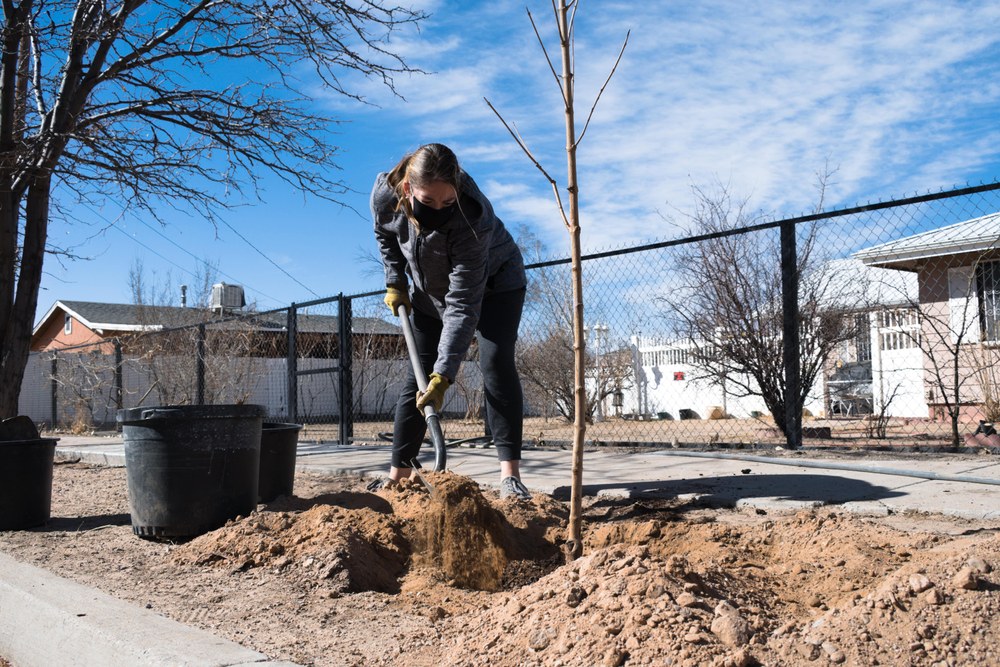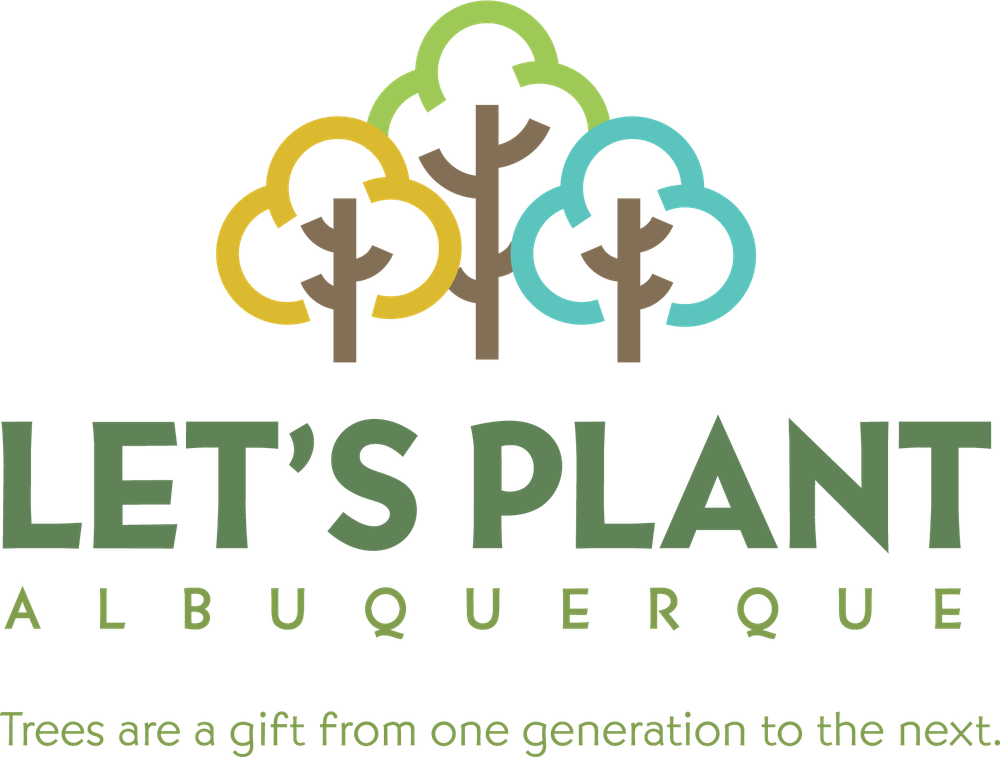Tree Information
Information about trees in the City of Albuquerque
Let’s Plant ABQ is a unified campaign to broadly support Mayor Tim Keller’s initiative to plant 100,000 trees, announced last year. The campaign will promote community tree plantings by individuals and organizations, share resources about tree planting and tree care, and educate the public about the importance of Albuquerque’s urban tree canopy. Trees improve the quality of neighborhoods and business districts, increase property values, save energy, improve air quality, and strengthen climate resilience.
Ways to get involved:
- The first 100 people to plant a tree, and email a photo and a mailing address to [email protected] will receive a free Let’s Plant ABQ merch item
- Utilize ABCWUA’s TreeBate program
- Gives a maximum rebate of $100 on residents’ water bills to help cover the cost of tree maintenance or the purchase of new trees
- Organize a community or organizational tree planting event
- Tree plantings with the City can be scheduled through: [email protected].
- Donate to the “Lets Plant ABQ” One Albuquerque Fund or one of the other partnering non-profits

Suggested Climate-Ready Tree Species List for Planting in Albuquerque
The Let's Plant Albuquerque Coalition has created a list of climate-ready trees that are appropriate for planting in Albuquerque and the surrounding area. This list is not intended to serve as a regulation for what trees may be planted, but just as a reference for residents as to which species will do the best in our arid climate.
Tree species should be selected on several criteria, including: regional adaptability; non-invasiveness; street or landscape appeal; family and species diversity.
- 30% from any one family;
- 20% from any one genus;
- 10% from any one species.
| Family | Species | Size |
|---|---|---|
| Aceracea | Big tooth maple ('Acer grandidentatum') | Medium |
| Aceracea | Box elder ('Acer negundo') | Medium |
| Anacardiacea | Chinese pistache ('Pistacia chinensis') | Medium |
| Anacardiacea | Purple smoke tree ('Cotinus coggygria)' | Small |
| Caprifoliaceae | Mexican elder ('Sambucus mexicana') | Small |
| Cupressaceae | Incense cedar ('Calocedrus decurrens') | Large |
| Eleagnaceae | Silverthorn ('Eleagnus pungens') | Small |
| Fabaceae | Black locust ('Robinia psuedoacacia') | Large |
| Fabaceae | Honey locust ('Gledistsia triacanthos') | Large |
| Fabaceae | Japanese pagoda Tree ('Sophora japonica') | Large |
| Fabaceae | Kentucky coffee tree ('Gymnocladus dioica') | Medium |
| Fabaceae | Oklahoma redbud ('Cercis reniformis') | Small |
| Fagacea | Bur oak ('Quercus macrocarpa') | Medium-Large |
| Fagacea | Chinquapin oak ('Quercus muelenbergii') | Medium-Large |
| Fagacea | Texas red oak ('Quercus texana or buckleyii)' | Medium-Large |
| Ginkoaceae | Ginko ('Ginko biloba') | Large |
| Juglandaceae | Arizona walnut ('Juglans major') | Medium |
| Juglandaceae | English walnut ('Juglans regia') | Medium |
| Juglandaceae | Pecan ('Carya illinoensis') | Large |
| Lythraceae | Crape myrtle ('Lagerstroemia indica') | Small |
| Oleacea | Arizona ash ('Fraxinus velutina') | Medium |
| Oleacea | Raywood ash ('Fraxinus angustifolia') | Medium |
| Pinaceae | Blue Atlas cedar ('Cedrus atlantica') | Large |
| Pinaceae | Deodar cedar ('Cedrus deodara') | Large |
| Pinaceae | Austrian black pine ('Pinus nigra') | Medium |
| Pinaceae | Italian stone pine ('Pinus pinea') | Medium-Large |
| Pinaceae | Scots pine ('Pinus sylvestris') | Large |
| Plantanacea | Arizona sycamore ('Platanus wrightii') | Large |
| Plantanacea | London plane tree | |
| Rosaceae | Serviceberry ('Amelanchier utahensis') | Small |
| Rosaceae | Apricot ('Prunus spp') | Small |
| Rosaceae | Mountain ash ('Sorbus spp.') | Medium |
| Rosaceae | Purple leaf plum ('Prunus cerasifera') | Small |
| Rosaceae | Wild plum ('Prunus americana') | Small |
| Salicacea | Rio Grande cottonwood ('Populus wislizeni') | Large |
| Sapindaceae | Golden rain tree ('Koelreuteria paniculatta') | Small-Medium |
| Ulmaceae | Common hackberry ('Celtis occidentalis') | Medium |
| Ulmaceae | Lacebark elm ('Ulmus parvifolia') | Medium |
| Ulmaceae | Netleaf hackberry ('Celtis reticulata') | Medium |
| Ulmaceae | Zelkova ('Zelkova serrata') | Medium |
This list is not an exhaustive, exclusive list and it will be amended over time.
More Information
For more information, email [email protected]
Reporting Dead Trees
Please keep this in mind when reporting dead trees:
If the trees are in a median or park, please call 311.
If the trees are on the side of a street, the adjacent business/property owner is responsible.
If the trees are on private property (such as in a yard or fenced-in area), the property owner is responsible.

